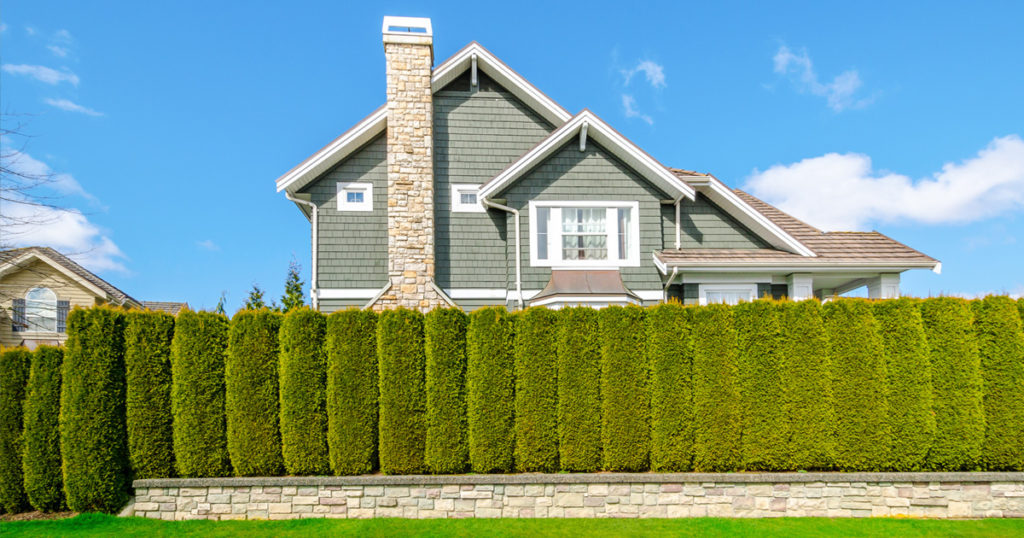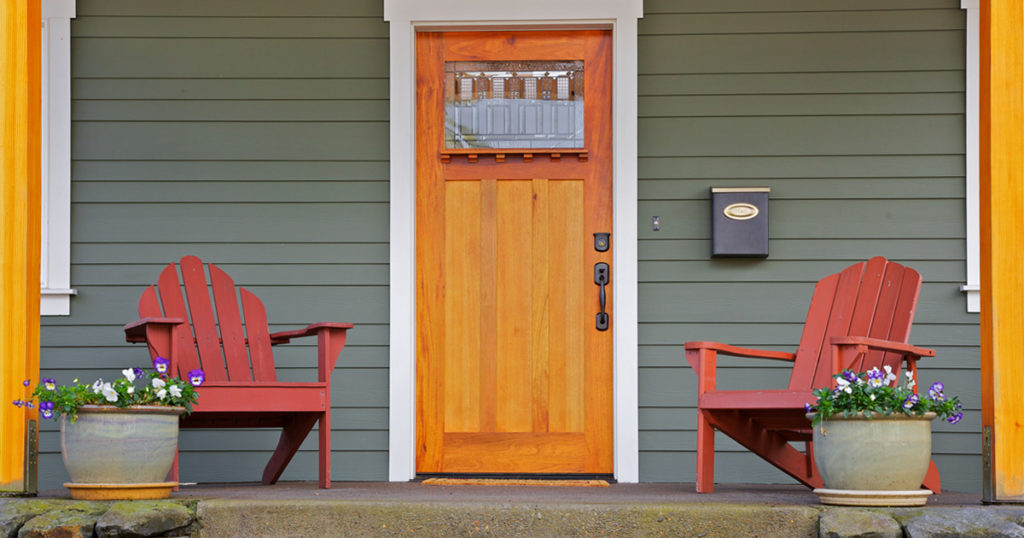You love your neighbors (hopefully). You love the feeling of community and togetherness. Chances are also high that you like privacy and boundaries as well. Most folks think of fences when they think of privacy. But fences can be a prohibitively expensive proposition, particularly if you’re not likely to be in your current home for very long before the military sends you somewhere else. You have lots of less expensive alternatives available to you—many of which you can tackle on your own over a weekend.
Bring the curtains outdoors. Sure, this isn’t a terribly practical solution to enclosing an entire backyard, particularly if you have a good-sized yard. But it is a great option if you’d like to cordon off a small area or section of your outdoor space. You can use existing structures in your yard, like railings or trees, or use wooden posts you install for this purpose. Wires, rods, ropes – there are several ways you can hang the curtains. Pick outdoor curtains for greater durability against the elements.
Build your own privacy screen. Depending on your budget and taste, you can purchase pre-built screens of various materials. Better yet, you can upcycle pallets, old shutters, screens, or doors for this purpose. Use hinges to connect them to each other and voila—instant folding screen of whatever size you choose to design. You can sand, paint, and/or decorate to your heart’s content to leave your own one-of-a-kind imprint or enjoy the “aged” look as is. Lattice panels, if secured with wooden posts or boards, will also do the trick here. (And they sell retractable backyard screens too that you can anchor to your deck or patio if you want a less-DIY DIY option.)
Utilize large planters and flower boxes. This is a very beautiful way to put some space between you and your nearest neighbors. You can fill the planters and boxes with lush flowers, tall ornamental grasses, and large, full plants of various colors and types. Vary the number and distance of the planters depending upon how much privacy you’re aiming for. You can even attach flower boxes or containers to that lattice screen referenced above to double your available gardening space while shielding your yard from nosey neighbors.
Plant your own evergreen privacy fence. Planting trees, bushes, and shrubs suitable for privacy requires very few materials—shovels, dirt, and the bulbs/plants/trees themselves along with suitable growing conditions like sun and friendly soil. The only real issue here is that you need to know your end game. If this is your forever home you’re landscaping, you’ve got all the time in the world to “build from scratch” and watch your plant babies grow. If you’re looking for a quick privacy fix and it’s unlikely you’ll be planted here as long as the plants are, you’ll want to invest your time and resources in options that yield speedier benefits.
- Options for quick results: You can buy and plant fully grown hedging. While the idea of having an instant six-foot evergreen privacy screen may sound tremendously appealing, keep in mind that this option can be cost-prohibitive and may also require special equipment for planting. A less expensive alternative is to select quick growing plants, flowers, and hedges. Need some inspiration? Hydrangea, forsythia, and beautybush are all shrubs with a growth rate of more than 24” per year that will add gorgeous color to your yard as well. Prefer green? North Privet grows at a rate of three feet per year and with its dense foliage, makes a great (and shearing/shaping friendly) privacy screen.
- Options for when time is not an issue: If you’re planting for the long game and are already in your forever home, you have the time to put in new plants and trees and enjoy watching them grow. You can experiment with a wide assortment of ornamental grasses, trees, and bushes. You can even mix it up with a well-orchestrated combination of evergreen and flowering shrubs. This option gives you both the benefit of seasonal color and continued privacy even after flowering plants are no longer in bloom.
Whether you’re planting for short or long term, it’s worth your time to visit your local home and garden store for expert advice. Communicate what you’re hoping to accomplish, and you can expect to learn what thrives where it—and you—are planted.
Most of these solutions have additional benefits besides affording you some shelter from prying eyes. Fences and barriers can reduce sound, protect from winds, minimize the amount of snow removal you’ll have to do, and potentially keep you from having to invade someone else’s privacy without intending to.
Whatever your reason for putting some literal and figurative space between your home and your surroundings, setting up a privacy barrier is just a matter of some creativity, resourcefulness, and a little bit of your time in order to reap rewards.



